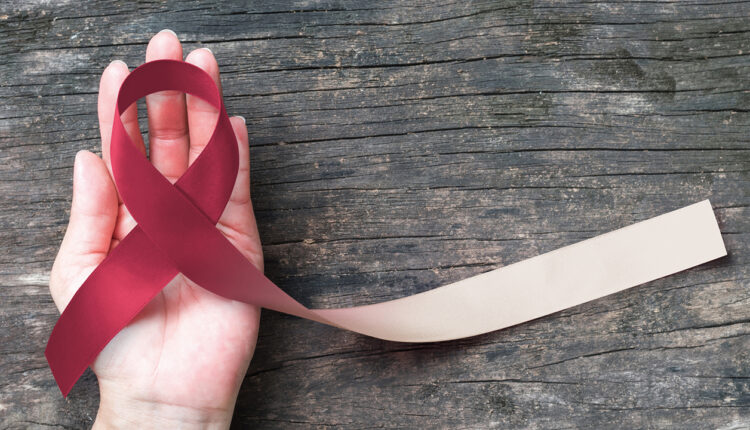
The Difference Between Life and Death
Dental hygienists are on the front lines of early oral cancer detection.
The dental world has changed tremendously since I graduated from dental hygiene school in 1982. Like my dental hygiene colleagues, we have continued to learn and adapt to new research and technology, incorporate a variety of computer programs, and wear personal protective equipment to prevent the transmission of bloodborne pathogens and airborne viruses such as COVID-19.
These changes have added more duties to already tight schedules that make up a typical appointment. Too often, we are not allotted adequate time to do it all. This means that something usually gives, or worse, does not get done or is done hastily. The glossing over or elimination of the oral cancer exam is sometimes the result.
In my opinion, the oral cancer examination is one of the most important parts of the dental appointment. As prevention specialists, we have become the default healthcare provider entrusted with this crucial exam. As oral cancer can lead to death, we cannot let this responsibility fall by the wayside.
The Risk Is Real
In the United States, more than 70% of oral cancers are late-stage discoveries when morbidity and mortality rates are increased.1 Given that most of these cancers and, very often, their precancerous signs, can be seen with the naked eye or felt with the finger, this statistic is troubling. The increase in incidence when oropharyngeal cancers are included has increased annually for the past couple of decades. In 2023, about 54,000 Americans were newly diagnosed with one of these cancers.2 This equates to about 145 new oral cancer diagnoses every day, and one person dying every hour of every day 365 days per year from oral cancer.2
The death rate for oral cancer is higher than other more commonly recognized cancers, mainly due to late-stage discovery and diagnosis. We have pap smears, mammograms, colonoscopies, and more to detect cancers early in other parts of the body, but we do not have a standardized screening for oral cancer. The visual and tactile screening provided by dental hygienists, combined with referrals to dentists/oral surgeons to confirm and refer out suspect tissues for biopsy, is the current standard of care.
Oral cancer is not typically screened for at general medical offices because their providers are not trained in the discovery of abnormalities in the oral cavity. If dental hygienists do not perform this exam consistently and well, it is not getting done.
Role of the Dental Hygienist
The first step dental hygienists can take is to get comfortable doing a thorough oral cancer exam on every patient, no less than annually and, better yet, at each appointment. A variety of continuing education (CE) courses are offered at almost every major dental and hygiene meeting. When you attend those meetings, will you make time for this life-saving course and knowledge?
CE courses provide a starting point to gaining knowledge; practice will be your best friend in becoming confident. Remember, you will not know if the abnormal tissue you see or feel is cancer, only the pathologist will be able to determine for certain, but dental hygienists are the crucial starting point in the whole process. We can save a patient’s life in a simple visual and tactile exam. Unfortunately, I have heard too many stories that oral cancer survivors’ dental providers either treated a lesion with medication thinking it was something else, or failed to refer — delaying a biopsy and early detection of oral cancer. In some cases, taking months, even years from when the lesion was noticed to cancer diagnosis.
Time is of the essence when it comes to any cancer, especially with oral squamous cell carcinoma, which invades quickly. This means our minimum annual oral cancer exam and prompt referral to an oral surgeon for definitive diagnosis via biopsy must not be compromised.
Oral Cancer Foundation
I’m proud to be part of the Oral Cancer Foundation (OCF), which supports patients, promotes education, sponsors research, and encourages regular screenings at all dental offices to help reduce late-stage diagnoses and poor long-term outcomes.
The OCF also sponsors walks and screening events around the country to help raise awareness of the importance of annual oral cancer screenings in dental offices. Volunteering at an event or starting one in your community has a huge impact. Visit oralcancer foundation.org for a list of 2024 events. If you do not see an event in your area, consider coordinating one — it is fun to do with a colleague and you can help change the world of oral cancer.
It is dental hygienists who will change the problem of late-stage discovery of this deadly disease. Be part of the change.
References
- González-Moles MA, Aguilar-Ruiz M, Ramos-García P. Challenges in the early diagnosis of oral cancer, evidence gaps and strategies for improvement: a scoping review of systematic reviews. Cancers (Basel). 2022; 14: 4967.
- The Oral Cancer Foundation. Rates of Occurrence in the United States. Available at: oralcancerfoundation.org/facts. Accessed February 26, 2024.
From Dimensions of Dental Hygiene. March 2024; 22(2):14-15

